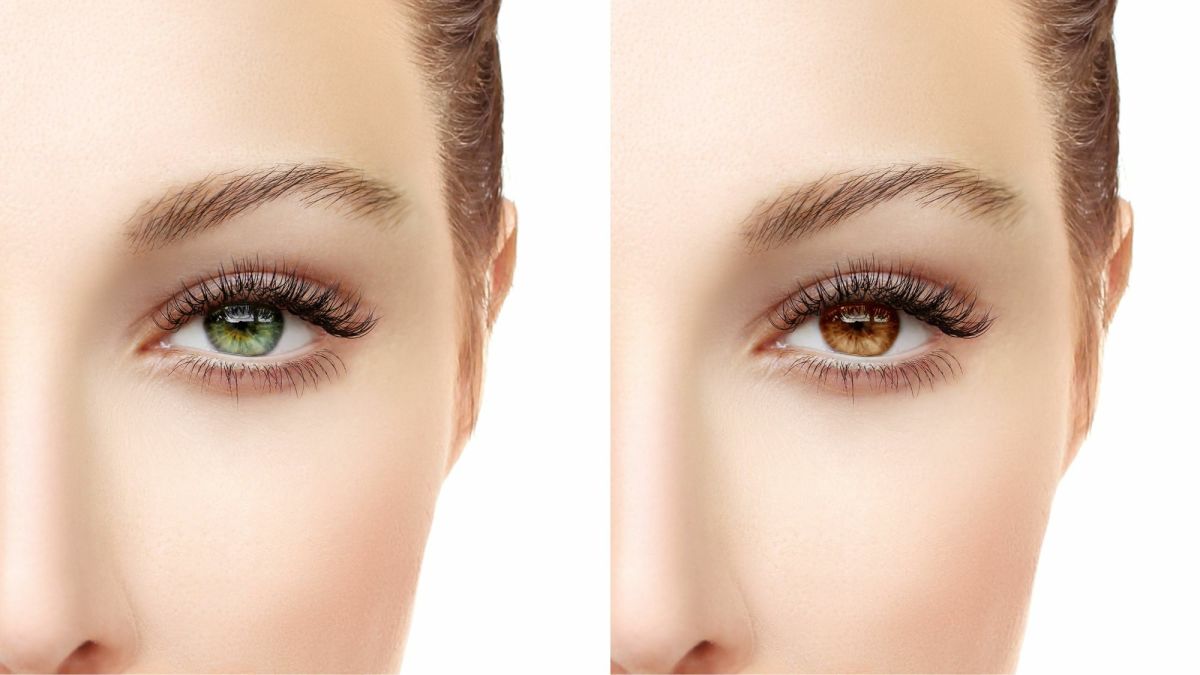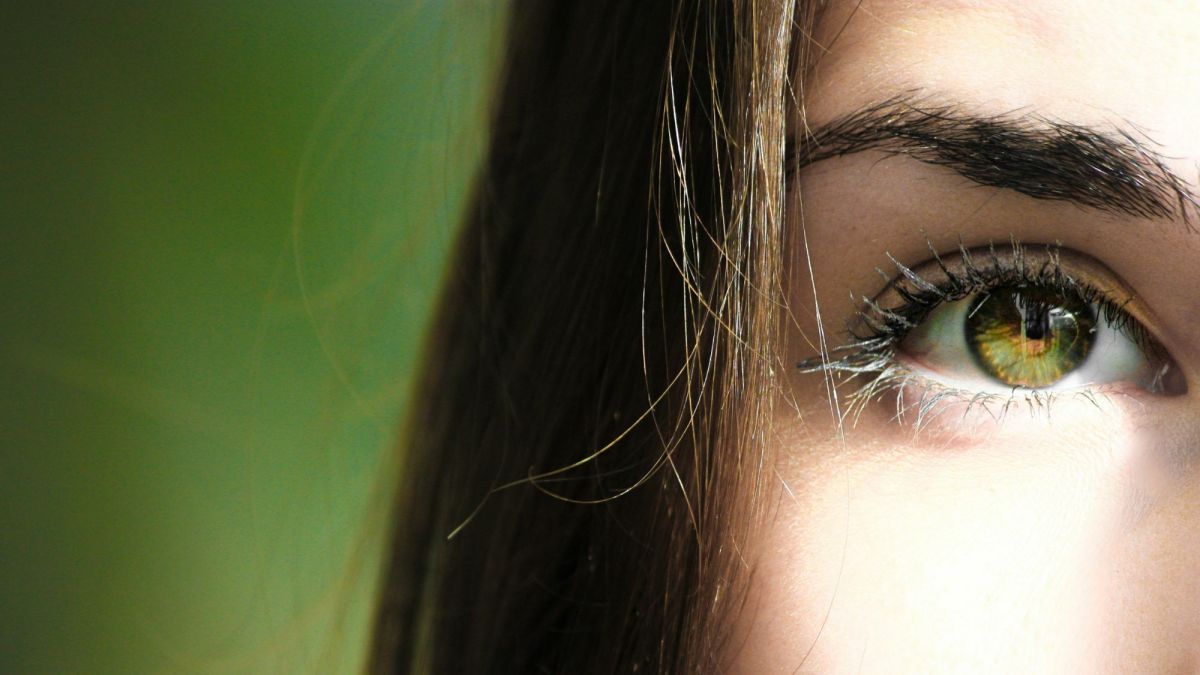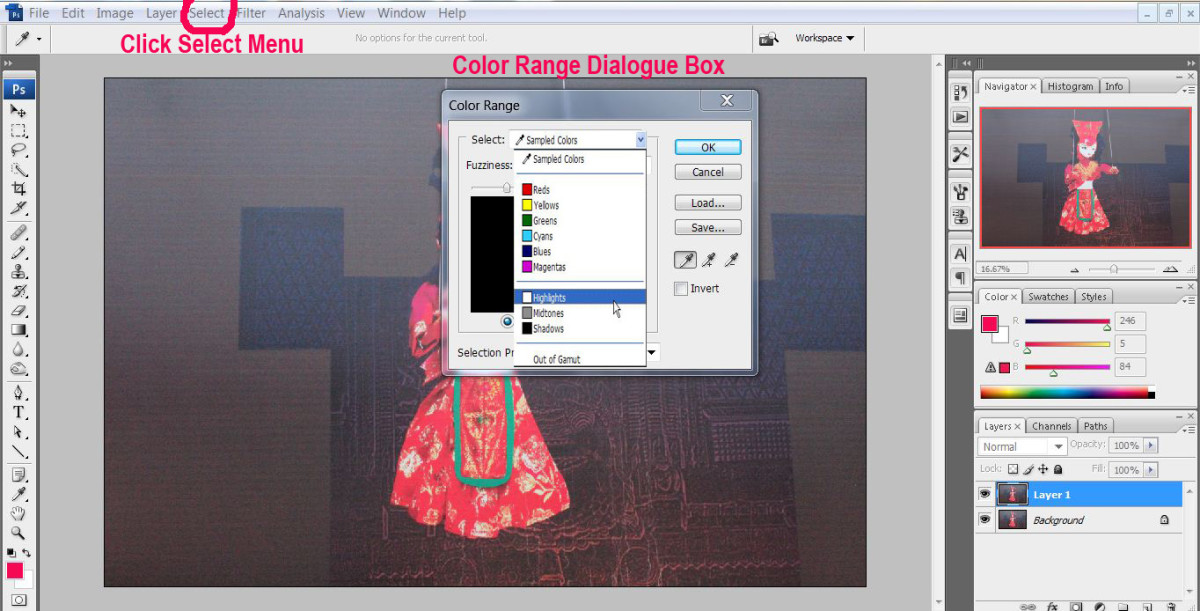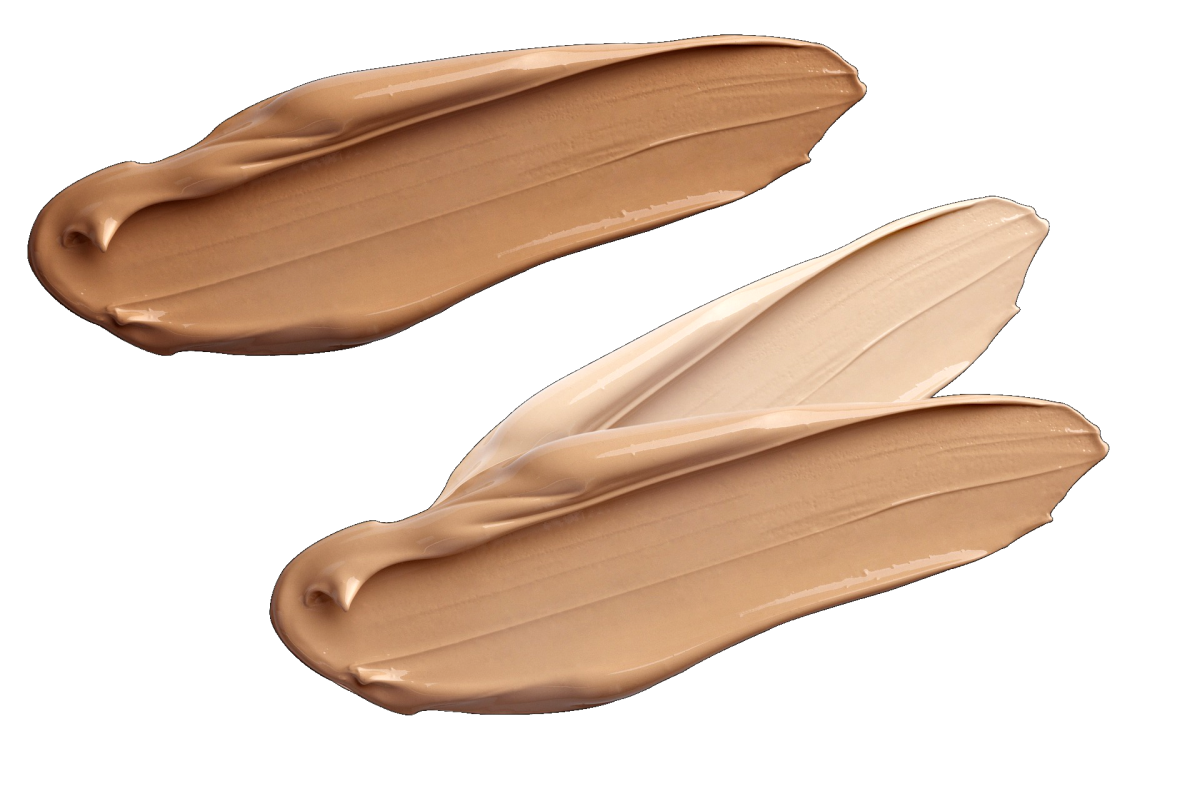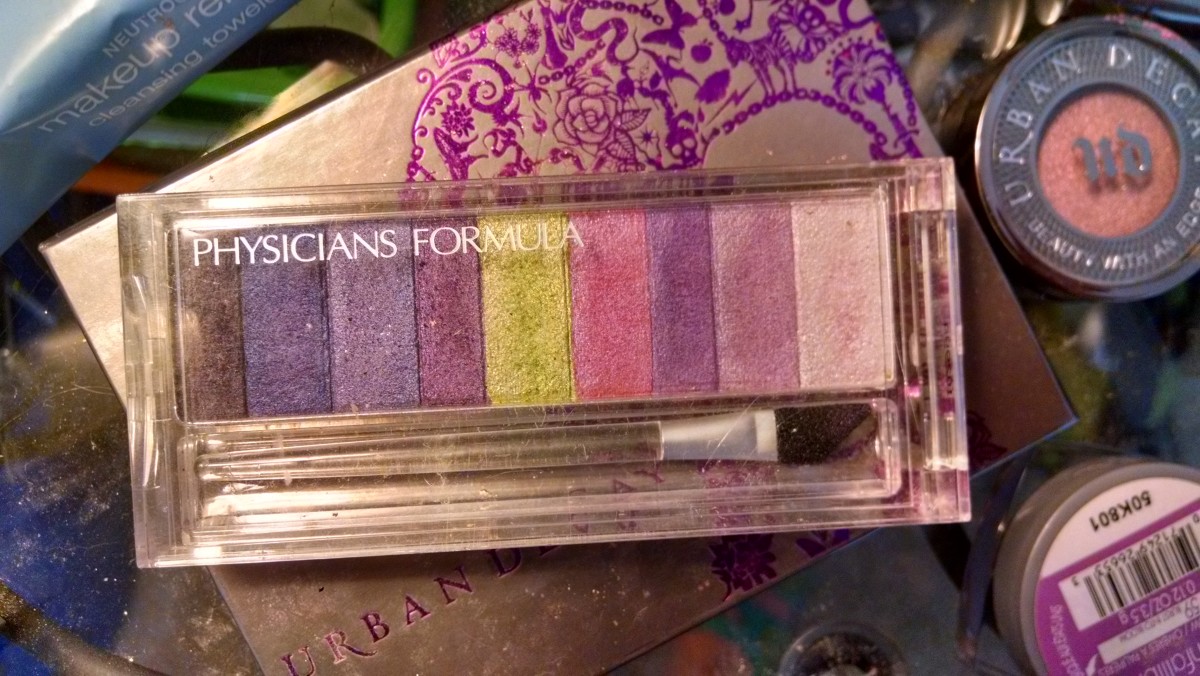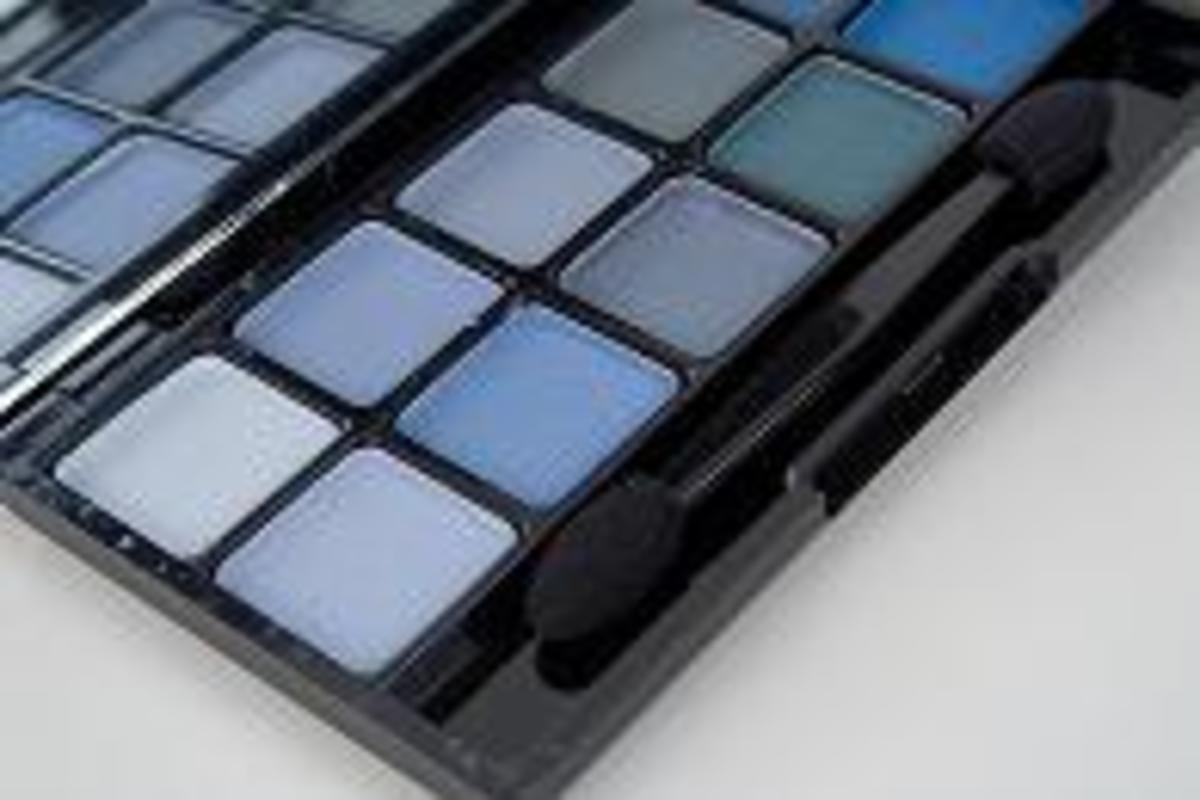How to Apply Eye Shadow
How to apply eye shadow and choose products that work with your skin type, coloring and eye shape.
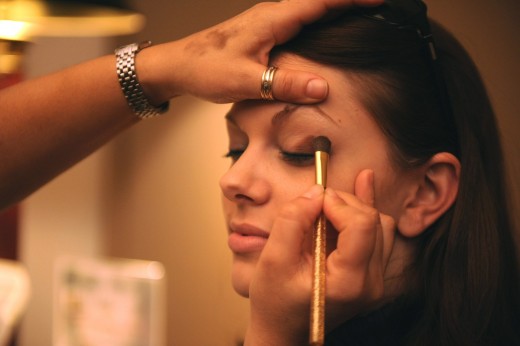
Applying eye shadow is about improving the eye contour, enhancing eye color, and creating effects through shading and highlighting.
Eye Primer
Primer works like a double-sided sticky tape to help eye shadow stay on longer, as well as providing a good base upon which to apply it. But you don't necessarily need a product labeled "eye primer". Foundation works equally well.
If you have deep set eyes, use concealer two nuances lighter than your natural skin tone. This will make your eyes seem more open and expressive.
Which Type of Eye Shadow to Choose
If your skin is young and healthy, you can apply any type of eye shadow depending on the effect you wish to create.
Glossy, satin and cream eye shadows, however, make dry and mature skin appear crepy. Therefore, use only matte powder products, even for highlighting.
Regardless of skin type, use only matte powder products for shading, blending, and smudging.
Cream eye shadow must be fixed with a light dusting of translucent powder.
Which Colors to Choose
With the exception of nude and natural palettes, which are most effective when enhancing the eye contour, eye shadow will flatter only if you've chosen a shade that complements your eye color.
Refer to the following guide to ascertain the tonal range that will suit you best and the kind of effect you can expect.
There are several variations of each listed eye color, so experiment to find exactly what is right for you.
Eye Shadow According to Eye Color
Eye Color
| Eye Shadow for a Subtle Effect
| Eye shadow to Accentuate Eye Color
|
|---|---|---|
Blue
| Blue
| Brown
|
Brown
| Brown
| Mahogany (reddish-brown), gray
|
Green/Hazel
| Green, khaki, bronze
| Purple, orange, black
|
Gray
| Black and gray, or choose from the above depending on the base tone of your eyes
| Choose from the above depending on the base tone of your eyes
|
Eye Shadow Brushes and Applicators
Brushes
To apply cream eye shadow, use only synthetic brushes; a round tip concealer brush often suffices. Natural bristles work best for powder eye shadow.
Eye makeup brushes come in various shapes and sizes, but the following are the most useful.
Brush Type
| Brush Function
|
|---|---|
The Flat Tip Brush
| The flat tipped brush is an all-rounder. It can be used to apply eye shadow to larger surfaces and, when turned sideways, is ideal for the lid crease and lower lash line. For definition, choose firm bristles.
|
The Firm Round Tip Brush
| Use a firm round tip brush in the lid crease and for feathering when creating a smoky effect.
|
The Soft Round Tip Brush
| Use the soft round tip brush to set highlights, for subtle shading, and for blending if you don't have a blending brush at hand.
|
The Blending Brush
| The blending brush has soft bristles and is used, as its name suggests, only for blending.
|
The Liner Brush
| Use the tightly bound liner brush to apply loose kohl and powder eye shadow as eyeliner. If using eye shadow, wet the brush beforehand.
|
The Angled Definer Brush
| This is another tightly bound brush. It draws somewhat thicker lines when used to apply powder kohl and eye shadow as eyeliner, and is ideal for applying eyebrow powder.
|
Applicators
Applicators are best suited for smudging, although eye shadow palettes are almost always conveniently equipped with one, usually double-ended, that can be used in place of a brush.
For a perfect finish, an applicator must allow you to apply even pressure. Test by squeezing the sponge part to ascertain whether it's held on by a simple rod or pin, or by a spade-like structure. The latter is what you need.
Cleaning Eye Shadow Brushes and Applicators
Keeping application tools clean is not only hygienic, it also prevents colors turning out "muddy" rather than as intended.
It's best to use a separate brush or applicator for each tonal range. For example, keep one for a purple palette, one for a blue palette, and another for a gray palette. Always wipe brushes and applicators on a cosmetic tissue before changing shades—e.g., dark to light and vice versa.
Wash brushes and applicators once every couple of weeks. Simply swirl in a little baby shampoo in the palm of the hand, rinse well, then squeeze out excess moisture. Leave to dry on a counter edge with the bristles or application sponge in mid-air.
How to Apply Eye Shadow
Before applying powder eye shadow, dust translucent powder over the tops of your cheeks. That way, you’ll be able to brush away any stray particles—known as "eye shadow fall-out"—without ruining your foundation.
Remember to apply dark colors before light colors; in other words, shade first, then highlight.
Upper Lid Only
Coating only the upper lid is the most straightforward way of applying eye shadow, but it shouldn’t be done without prior thought.
Consider first your eye shape and the sort of effect you want to create. This will help you decide on a product type and color.
A dark shadow can make eyes seem smoldering and sultry, while pastels have a fresher, dewier effect, especially if a cream or satin product is used. But the latter would only be suitable for smaller or perfectly proportioned lids. Convex eyes need dark, matte powder products, which have a receding effect.
When wearing eye shadow in this way, shades that either complement or accentuate eye color, like blue, purple, and green, may appear inappropriate when not in fashion, whereas nudes and naturals are timeless.
To apply, use a flat tip brush and work from inner to outer eye corner along the lash line, then along the lid crease.
Hooded eyes should avoid this, since the entire lid must be visible.
Setting Highlights
Beneath the Brow
A highlight placed beneath the brow accentuates the brow bone and softens the effect of dark eye shadow. This should obviously be done with a very light shade; either white or pastel.
You can use any type of eye shadow, but its texture should correspond with the rest of your eye makeup. Blend from the brow downwardly toward the temple. If using powder eye shadow, you'll need a soft, round tip brush.
Illuminators and opalescent highlighters, like Benefit's High Beam, work well for a nighttime effect, especially if used to highlight the cheeks, too. As with cream eye shadow, it's best applied with a round tip concealer brush.
Avoid this highlight if your brow bone is particularly prominent or if you have hooded eyes.
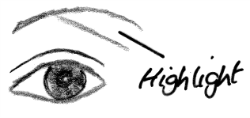
On the Eyelid
A highlight at the center of the lid adds glamorous sparkle, as well as enhancing small and deep set eyes.
Set this highlight as a final step after you've blended the rest of your eye shadow.
Apply shadow to the center of the lid above the pupil and blend outwardly using a soft, round tip brush. You can use any product for this, including illuminators and opalescent highlighters, but the texture must correspond with the rest of your eye makeup.

Shading
Shading the Inner Brow
This little bit of shading is a godsend if you have to dash from the office to a dinner date. It instantly turns your discreet daytime makeup into a seductive nighttime look, which saves lots of time.
You can only do this if your eyes are perfectly spaced or wide set. Don’t try it if your eyes are close set—it will pull them together even more!
Just apply a neutral toned eye shadow beneath the inner section of your brow and blend it downwardly towards your inner eye corner.
Use a soft, round tipped brush.
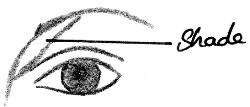
Shading the Outer Eye
This is how you can minimize a prominent brow bone or hooded eyes.
Apply eye shadow beneath the outer section of your brow and blend downwardly until it fades.
You can place a highlight in the arch of your brows, but be prepared that this does not work for everyone.
Use a firm, round tipped brush for the shading, and a soft, round tipped brush for the highlight.
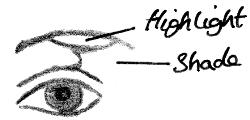
Enhancing the Eye Contour
How to Elongate Eyes
This pulls close set eyes apart and makes round eyes look narrower. Try this, too, if your eyes are small; it's often more effective than trying to make them look rounder. It’s also great if you want to create a ‘cat eye’ effect.
Simply apply dark eye shadow to your outer eye corner and work inwardly, blending outwardly and upwardly along the lid crease.
Use a flat tipped brush, and blend further for a smoky look with a firm, round tipped brush.
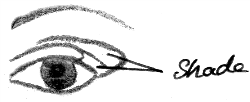
How to Make Eyes Look Rounder and Larger
Shade your entire upper eyelid blending upwardly, then shade your lower lid, blending outwardly until it joins the shading of your upper lid.
Alternatively, apply a lighter color to your upper lid, and a darker one in the crease. Experiment and see how you look with and without eye shadow on your lower lash line. This technique also works well for hooded eyes.
Use a flat tipped eye shadow brush, and a firm round tipped brush for extra blending.
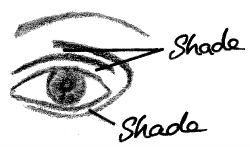
© 2010 Jayne Lancer


